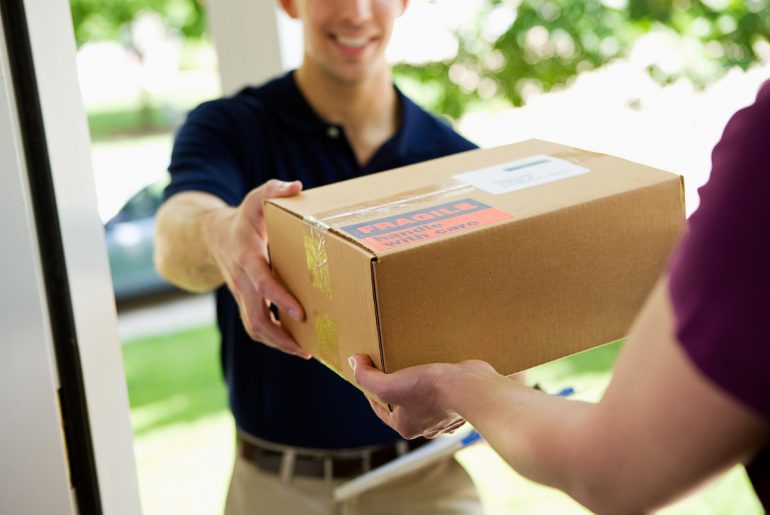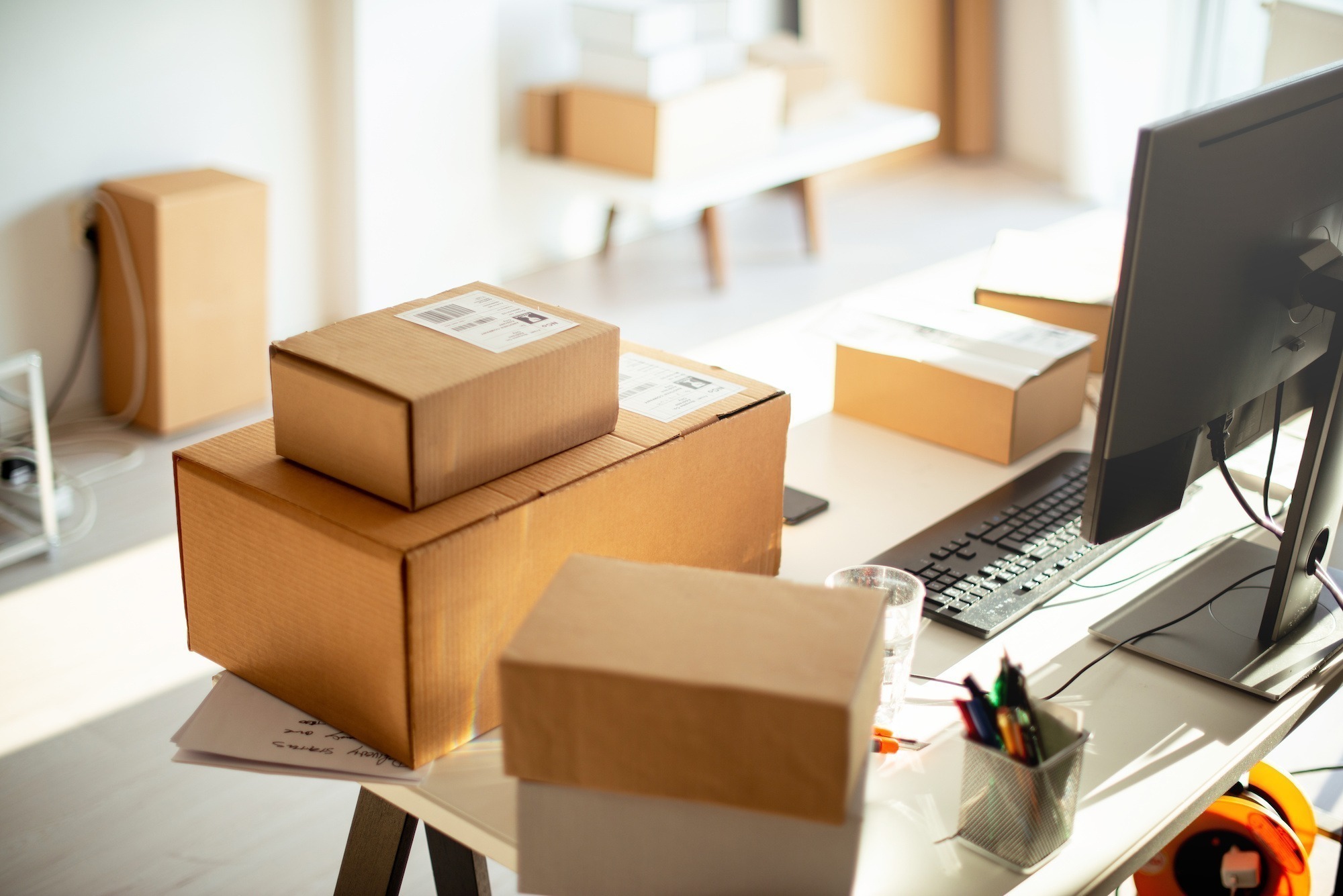Last mile delivery fees can be nearly 28% of a parcel’s total delivery cost. Here’s what you can do to improve margins.
Last mile delivery, the movement of goods from the transportation hub to the final delivery destination, is considered one of the most important aspects of any eCommerce business.
While shipping is primarily an automated process, last mile delivery is still one element that will always require the human touch.
It’s not something that can be stopped, even in the middle of a pandemic, as contactless delivery and social distancing prevails. However, it’s also where things can easily go awry.
Just think of any shipping problems you’ve personally experienced from shopping online. It’s likely it happened in the home stretch between the fulfillment center and your address.
For example, maybe you live in a remote residential area and delivery drivers notoriously miss your address. Or changes in staffing, health and safety policies are disrupting fulfillment and delivery processes, slowing things down and causing more delays than usual.
While these sort of things are difficult to prevent, you can still take a hold of one aspect of last mile delivery: how much it costs you.
In this post we’ll talk about the basics of last mile delivery and how it affects your eCommerce shipping strategy and bottom line. We’ll also look at how you can save money and delight shoppers at the same time.
Residential Delivery vs Commercial Delivery
When picturing last mile delivery, you’re likely only thinking of the residential delivery aspect of it.
For some, it paints an idyllic image featuring white picket fences, a smiling postal worker and a friendly exchange as a package gets delivered. (Well, adjusted to today’s norm, six feet of distance might be applied to this fantasy. But you get the idea.)
While a nice image, this type of interaction costs your business a pretty penny. In fact, experts say that last mile delivery fees for small packages can make up to 28% of a parcel’s total transportation cost.
Why is this the case? Well because residential deliveries require more time and distance. Instead of the delivery addresses staying confined to one tight commercial area, carriers have to venture out into the spread apart neighborhoods and rural communities.
In reality, there’s no way to really offset this “last mile delivery” problem. You can’t exactly control where your customers live.
You can, however, control what carrier you want to offer at checkout and how much you charge for shipping based on a customer’s geographic location. (With ShipperHQ, that is. But we’ll get to that.)
This is why carriers often charge a small residential surcharge when delivering to home addresses instead of commercial ones. And while the fee isn’t huge per package, if your business has a high order volume, this number adds up.
Carriers find it easier to deliver to businesses over the last mile because there’s usually someone there to handle pickup. Plus, package thieves and bad weather are out of the picture with commercial deliveries. Which means, upset customers are less common.
4 Ways to Cut Down Last Mile Delivery Costs to Residential Addresses
We’ve covered the main differences between residential and commercial deliveries. Now it’s time to dive into the specifics of how exactly you can save money here.
Even though commercial deliveries are friendly to your pocket book, you can’t exactly force this choice onto your customers.
What can you do to reduce last mile delivery costs for residential addresses? Here are a few suggestions.
Scheduling Windows
Delivering a package to a remote rural address is already a costly endeavor.
What if you need to redeliver multiple times because the delivery requires a signature or to provide white-glove service? This can drive up fees quite a bit and make you reconsider delivering to rural addresses altogether.
One way to avoid this is by allowing the customer to schedule a delivery window. This cuts down the chance the customer isn’t home, which can become a real problem. It also means that only one trip to the remote location is necessary, reducing costs and improving customer satisfaction.

Tracking & Notifications
People like to know where their items are at all times, and tracking is a great way to give them the heads up. Knowing they have access and up-to-date information is often enough to keep them calm in case something gets delayed.
Why not take this to the next level? Let your customers enable notifications for their items so they get updates right in their pocket immediately.
Many carriers, like UPS and FedEx, give your customers the option to receive text or email notifications.
This way, they know more accurately when to expect a package and can change their plans last minute if needed. By doing this, you will eliminate unforeseen issues like the customer forgetting to open a gate for the delivery driver.
Consider Same-Day Delivery
Too many merchants believe same-day delivery is just out of the realm of possibilities for them. But that’s just not the case anymore.
Sure, taking on the burden of doing it yourself can be complicated. From figuring out new fulfilment schedules, to setting up insurance for your drivers and paying for gas, it’s a lot. Operationally and financially this might not be viable to do on your own. That’s why using third-party providers could be your answer.
FedEx SameDay® City is a great option for you here. For one, the service is available in 34 major U.S. cities which means you can offer it in new markets as you grow. Second, you’ll be using a trusted brand so your customers will have more confidence in the service you provide. Plus, like mentioned above, package tracking is automatically included so there’s no guessing game involved.
Utilize Alternate Pickup
Rather than delivering individually to residential addresses, consider integrating an alternate pickup provider into your checkout. For example, FedEx® Hold at Location allows customers to pick up packages at a time and place that fits their busy schedule at 14,000 retail locations, including local grocery stores and pharmacies.
This also means delivery is as safe and secure as possible. Since drivers don’t come to a customer’s home directly, they can provide contactless delivery as social distancing continues. As long as the pickup spot is close to their neighborhood, your buyers may not mind the short drive to grab their items.
The biggest benefit of alternate delivery is that you can avoid residential surcharges all together. Not only can you keep costs down for your customer, but get fewer returns and customer service calls related to failed deliveries.
Don’t Be Surprised by Hidden Last Mile Delivery Fees
Shipping easily has some of the more random elements you’ll need to deal with. As a business owner, if you’re not ready to handle them, they can quickly become real backbreakers.
Last mile delivery problems are also more apparent than anything else because that’s what you’re customer is keeping an eye on. And while extra last mile delivery costs have always been there, now you have some simple solutions to help lower those fees, such as ShipperHQ.
We can make sure you’re getting charged the correct amount for last mile delivery every time.
Our built-in Address Validation feature automatically determines a customer’s address type for FedEx and UPS deliveries, meaning you’ll get invoiced accurate residential or commercial fees from these carriers every time.
Plus, our integrations with services like FedEx Hold at Location and FedEx SameDay® City help you offer your customers the customized delivery options they have come to expect today when speed and convenience are king.
Want to learn more and need advice on improving your shipping margins? Try a 15-day free trial of ShipperHQ today.






